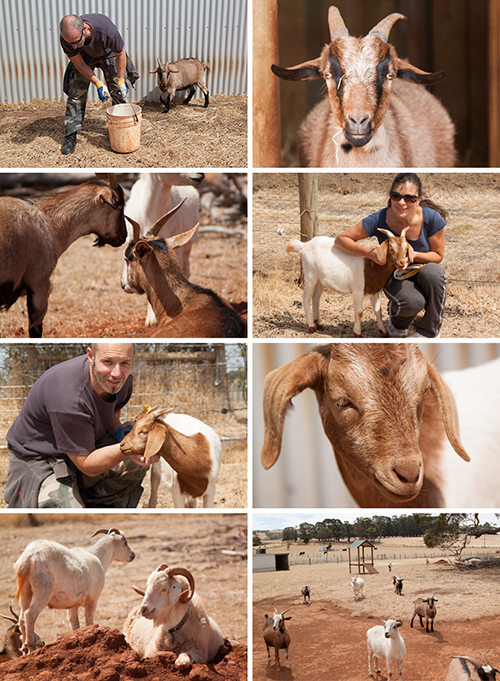There's a scene in the movie, My Big Fat Greek Wedding where the Greek family is horrified that the man their daughter is about to marry, is a vegetarian. The news silences the room and everyone's faces drop with pity for the man.
This is something I go through A LOT, with friends and family members thinking that I'm missing out on something that would otherwise make my life wonderful. That being a vegetarian is something that I must be really struggling with. That life without meat must be devastating for me.
So it's no surprise that the word "Orfana" is used at the end of a Greek dish title to indicate that it's a vegetarian version of a dish that would normally contain meat. The dish is considered "orphaned" without its meat component. This probably originated from a time when poorer families had to resort to eating meatless dishes when they couldn't afford to buy meat. Meat was for the fortunate ones, and if you couldn't afford it, you just had to settle for the much more inferior, poor-man's version of the dish.
It's interesting then, that there exists so many delicious Greek vegetarian dishes. These dishes may have once emerged as a result of the poorer times in Greece, but the fact that they still exist in today's Greek cuisine indicates that there's no denying these dishes actually taste really good without meat!
One such dish is Lahanodolmathes Orfana which are cabbage leaves stuffed with rice and herbs, and slow cooked in either an egg and lemon sauce or a rich tomato sauce.
In my version of this dish I have added lentils to the rice mix. I love the combination of rice and lentils, especially when used as a stuffing. The lentils help hold everything together, and add a bit of bulk and texture to the filling. They also taste lovely when cooked in a tomato sauce so my recipe today utilises the lentil and rice filling, a rich tomato sauce, and the gigantic cabbage that I received in my organic veggie box last week.
Lentil Stuffed Cabbage Leaves (Lahanodolmathes Orfana)
Serves 4–5
Ingredients
- 1 large cabbage
- 2 cups cooked lentils
- 1/4 cup uncooked long-grain rice
- 1 tablespoon tomato paste
- 1/4 cup olive oil
- 2 large onions, finely diced
- 1 egg, lightly beaten
For the tomato sauce
- 2 cloves of garlic, crushed
- 2 400g cans chopped tomatoes
- 1 teaspoon dried oregano
- 1/4 teaspoon cinnamon
- 2 teaspoons honey or 1 teaspoon sugar
Instructions
- Place whole cabbage in a large pot, cover with water, bring to the boil and let simmer for 5 or 6 minutes.
- While the cabbage is cooking, fry the garlic for one minute until fragrant, then add chopped tomatoes, oregano, cinnamon, honey (or sugar) and salt and pepper to taste. Bring the tomato mixture to the boil and allow to simmer until you finish preparing the cabbage leaves (around 20 minutes).
- Heat remaining oil in a separate pot and set the onions to fry over low heat for around 20 minutes, or until golden, stirring occasionally.
- Meanwhile, remove cooked cabbage from pot, drain and rinse under cold water. Carefully remove 8 to 10 large leaves from the cabbage, blot dry with a paper towel and trim thick parts of the stem using a paring knife, being careful not to slice through the cabbage leaf. The idea is to make the leaf as uniformly thin as possible, to enable easy rolling.
- Roughly chop up the remaining cabbage and use about two cups of this to cover the bottom of a heavy-based saute pan. You will need a pan that is around 25cm diameter with 6cm-high vertical sides and a lid. Drizzle with a few tablespoons of olive oil and set aside.
- Place cooked lentils, cooked onions and tomato paste in a large bowl, mix with your hands and season with salt and pepper to taste. Then add uncooked rice and egg and continue to mix with your hands until well combined. The mixture will be quite sloppy but will firm up when cooked.
- Remove tomato sauce from heat, cover and set aside. It should have been cooking for at least 15 minutes, but no longer than 30 minutes.
- Place about three teaspoons of the lentil filling onto a cabbage leaf and carefully roll up, folding in the sides before completing the roll, and place seam-side down on the bed of chopped cabbage in the saute pan.
- Repeat with remaining mixture and arrange all cabbage rolls in one layer in the saute pan.
- Pour tomato sauce over cabbage rolls until completely covered. It should look like this:
- If the sauce doesn't completely cover the rolls, add water.
- Place lid over pan and simmer on very low heat for 2 hours.
This dish is hearty and healthy and freezes really well. Just defrost and reheat in a saucepan over low heat with the lid on. You can add a small amount of water if necessary.
I'm linking this post with Veggie Mama's Meatless Mondays. Go take a look for some more fantastic vegetarian recipe ideas.

















































